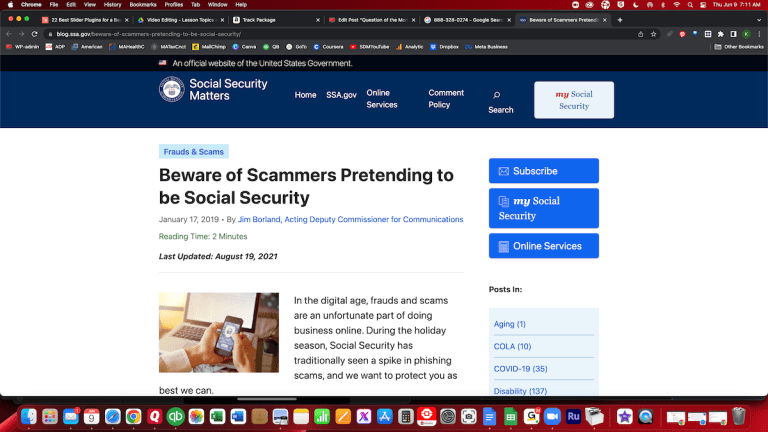Periodically we post answers to questions that are asked at the shop. This month, the question of the month is: how do I recognize a scam email?
Scam emails span a wide variety, but there are tips for identifying most of them.
Why it happens
Some scams are designed to get you to enter your personal information, or your passwords, into their websites. These emails often say that your account is being closed, you have ordered something, or you will be charged something.
Others try to get you to download malicious software. They have embedded links to click to view a video or see a document.
Still others are focused on getting money from you. They provide a service that you don’t need, or you think you are helping someone. These often look like they are coming from someone you know.
Content and images can be copied online very easily. Even if a real logo is used, or an invoice looks real, it many not be.
Clues to a scam in the email address
There are common clues you can find in the email.
First, always check the email address of the sender. This is NOT the name that shows as the sender. Anyone can use any display name for their email.
Depending on how you view your email, you may need to click on the sender’s display name to see this information.
Here the sender’s display name is Social Security Administration[SSA]. But, the email is actually sent from a gmail address.

The email below is supposed to be from Norton, a legitimate company. The email only contains an attachment, which is the “invoice” shown below. This email is also coming from a gmail address. This email is supposed to be a bill to a specific person, but it has been sent to a blind copy list (undisclosed-recipients). All are clues.

Clues to a scam in the email message
Look for misspelling, bad grammar, and phrases that just sound a little off. Scammer’s English is getting better, but there are often still signs.
A general rule of thumb is that the more urgency portrayed, the less likely it is to be real. All capital letters is usually fake. “You only have 24 hours” is usually fake.
This is the attachment from the email from Amina Smith shown above. The circled items might be clues to a scam. For example, capitalizing every word in a sentence is not normal. You’re instead of Your, and A/C Statement, are clues. What is an A/C Statement?
All of those are clues.

Finally, don’t call the phone number or click on the link in an email. Look the information up yourself, or log into your account online, or call your friend on the phone. Protect yourself by being wary.
Looking up the Social Security phone number online reveals this article from the real Social Security Administration. In 2019, they identified this phone number as a scam.

In general, do not ever download or install anything from an email unless you are certain that you know who sent you the email.
Real companies do need to contact you now and then, so don’t throw away every email that indicates a problem. Be careful. Watch for clues to recognize a scam email, and always feel free to call us to ask our opinion.
If you would like help with this process, just call or email and we’ll be happy to assist you! If you have questions, or if our terminology isn’t clear, please use our contact form to send us a message. Thank you!

